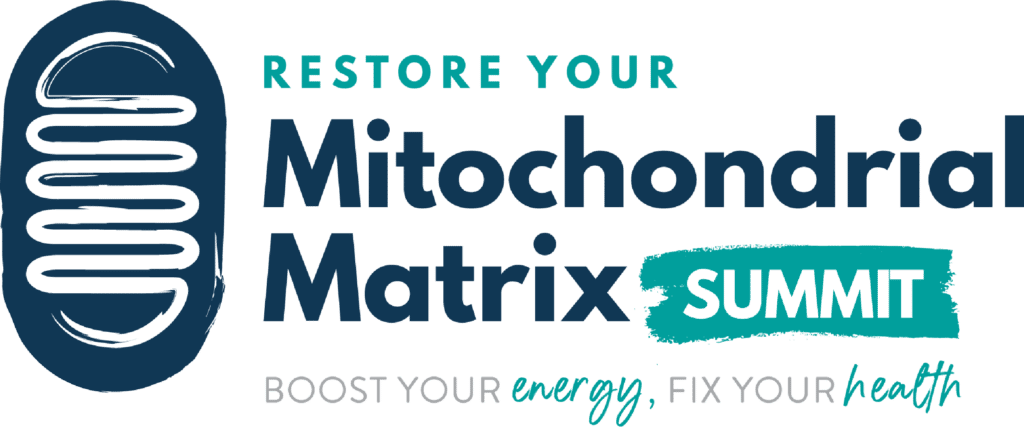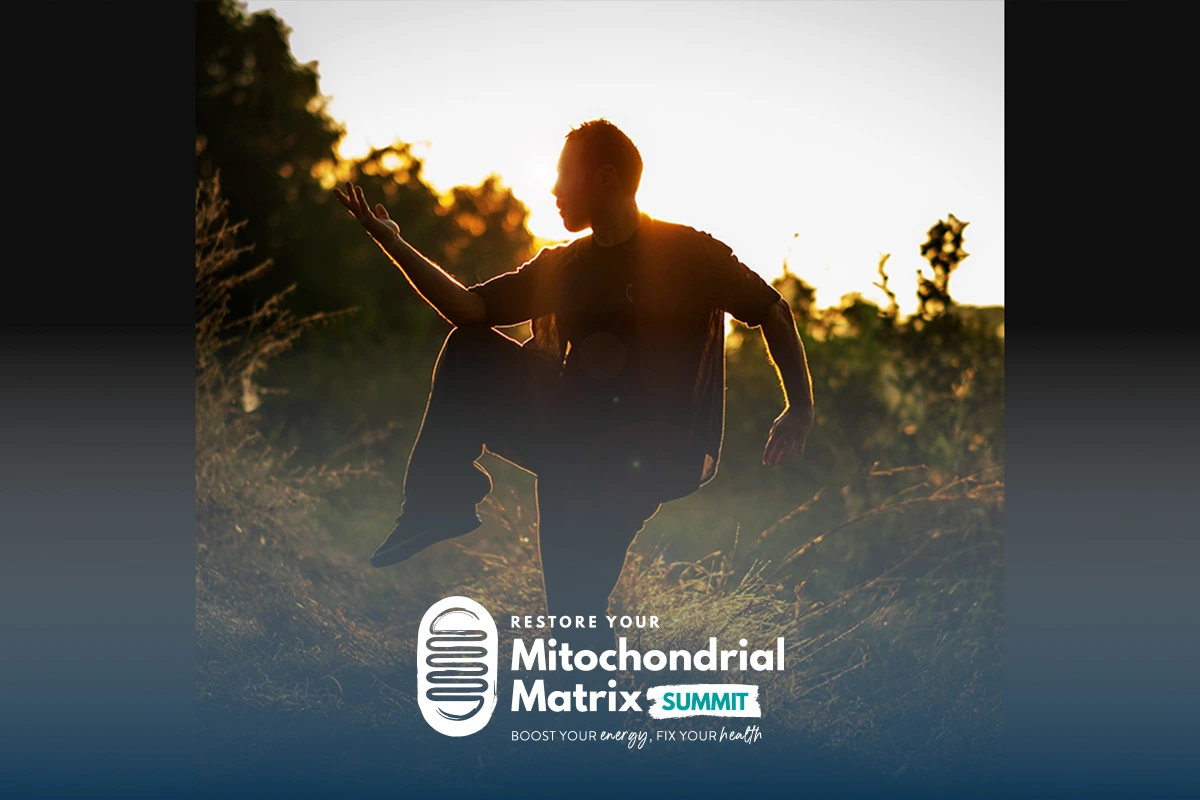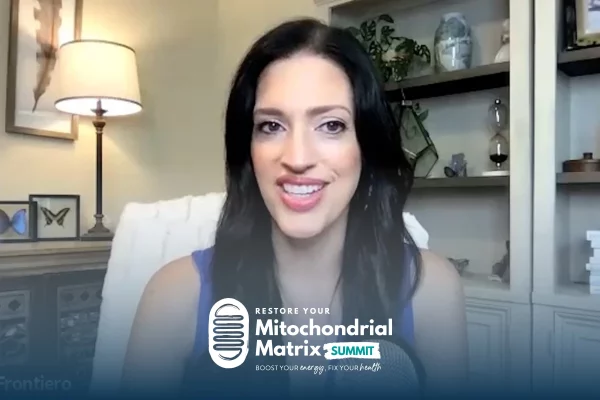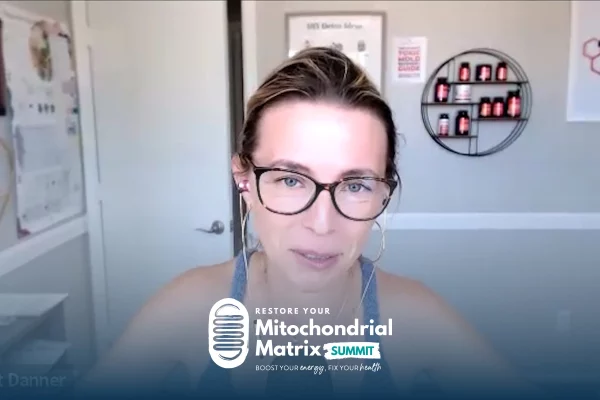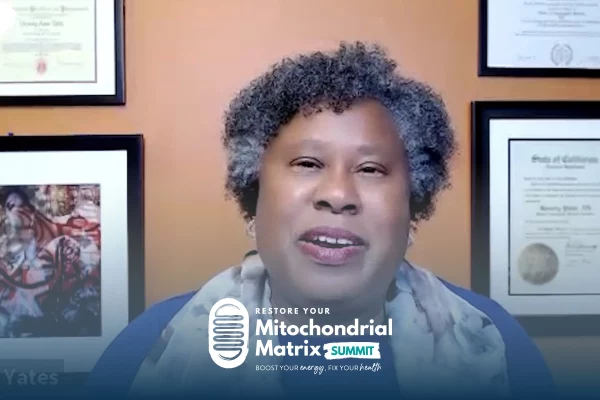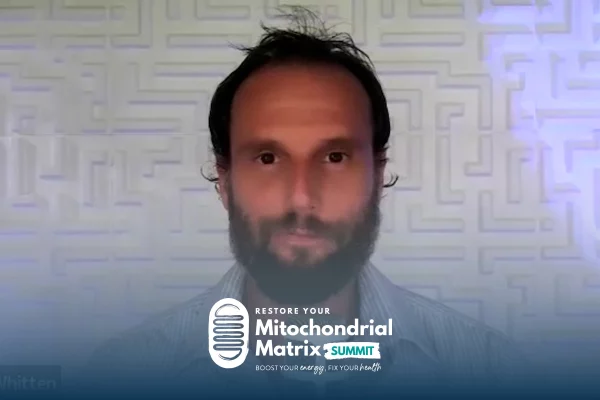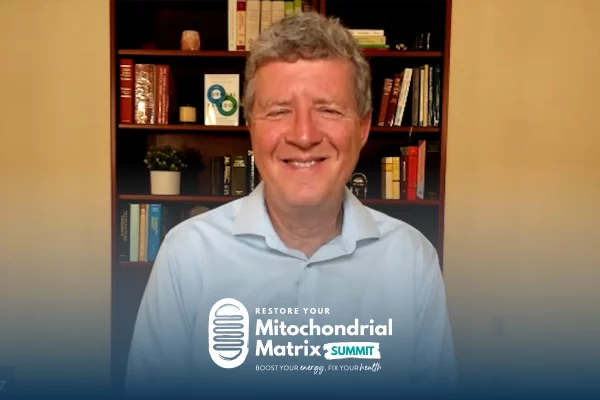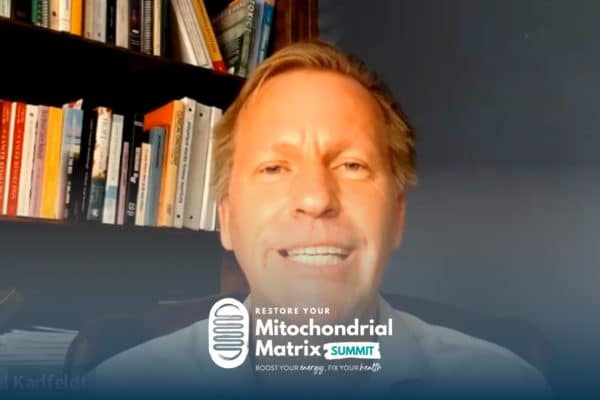Join the discussion below
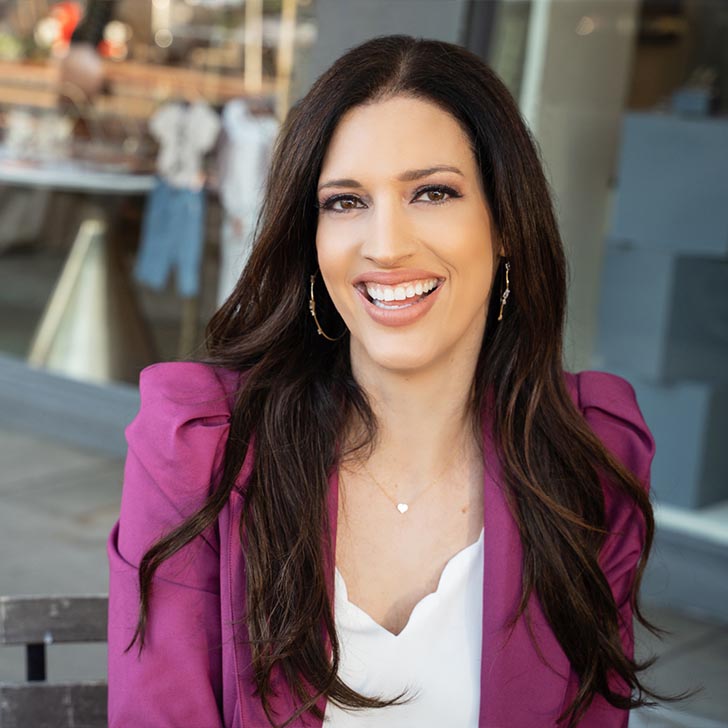
Laura Frontiero, FNP-BC, has served thousands of patients as a Nurse Practitioner over the last 22 years. Her work in the health industry marries both traditional and functional medicine. Laura’s wellness programs help her high-performing clients boost energy, renew mental focus, feel great in their bodies, and be productive again.... Read More
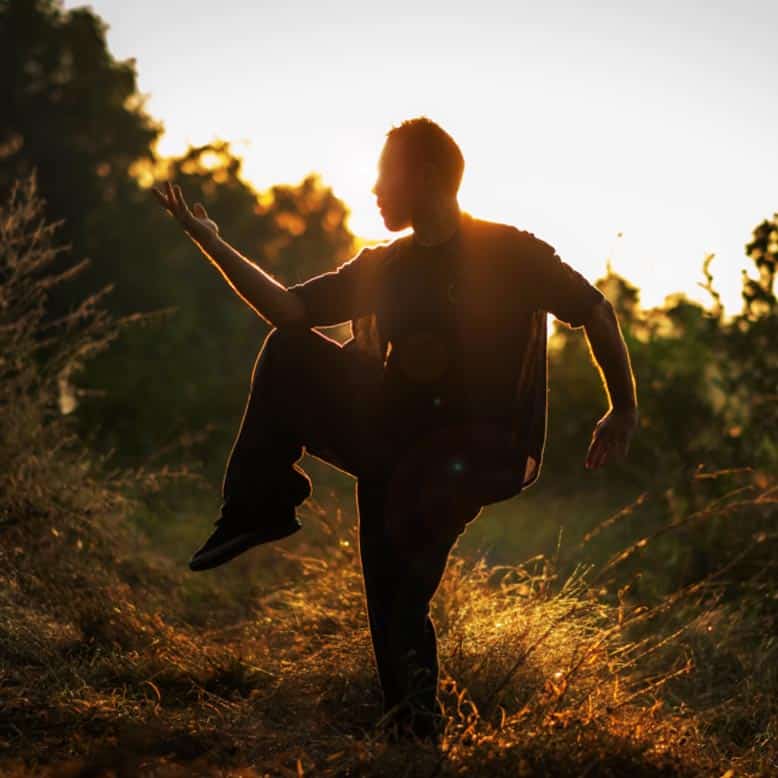
He began practicing martial arts, Qigong and meditation at the age of 7. As a student of Qigong, he journeyed all around China and the world seeking the greatest masters including northwestern part of Hubei, Beijing and Southern China, where he met and trained extensively with several true Qigong masters.... Read More
Tevia Feng Will Teach You About Qigong
- How Qigong helps heal the body, mind, and spirit
- Why Qigong is healing, the research behind it, and how Qigong is connected to neuroscience
- How to begin your own Qigong journey at home using free resources
The Benefits of Qigong to Your Health
- Support of mitochondrial health
- The healing of many health problems, including chronic pain and inflammation
- Anxiety relief through stimulation of the vagus nerve
Introduction
In this episode of the Restore Your Mitochondrial Matrix summit, Tevia Feng discusses the practice of Qigong and how it intersects with mitochondrial health, neuroscience, and overall healing. Feng is the master instructor at White Tiger Qigong. Tevia Feng practices Daoist Qigong, where it is believed that the body is intrinsically connected to the spirit. Feng began practicing Qigong at an early age due to being born with a chronic illness. In later years, after suffering pain from a car accident, Feng was able to reduce chronic pain in his spine. He decided to make Qigong his life’s work after working in a Qigong clinic treating cancer patients and those with intense illnesses. You can learn more about Qigong at whitetigerqigong.com or at the White Tiger Qigong channel on YouTube.
Practical Steps to Begin Qigong at Home
Although it is helpful to practice Qigong with a master, it can be practiced at home. One way is to simply connect with nature. Tevia Feng recommends connecting to the ground by standing on the earth with bare feet. Free tutorials on Qigong, along with more information and events, can be found at whitetigerqigong.com.
Conclusion
In this Dr. Talk, Tevia Feng discussed the science of Qigong and how it can heal chronic health issues. From having a chronic illness to being the victim of a car crash, Feng has found healing physically and spiritually through Qigong. Tevia Feng is now the master instructor of White Tiger Qigong and has studied with some of the most prolific Qigong masters in the world. Read more about Tevia Feng and the practice of Qigong at whitetigerqigong.com.
Related Topics
Brain Health, Cellular Healing, Chronic Illness, Daoist Qigong, Energy Healing, Health And Longevity, Longevity, Martial Arts, Medical Qigong, Meditation, Mitochondria, Mitochondrial Health, Nature Alignment, Neuroscience, Neuroscientists, Qigong, Science-based Approach, Spinal Health, Spirit-body Connection, Sports ScienceLaura Frontiero, FNP-BC
Welcome back to another episode of The Restore Your Mitochondrial Matrix Summit. I’m your host, Laura Frontiero. I’m bringing you experts to help you boost your energy and fix your health so you can build the life you love. And today, I have a very unique guest for our summit. My guest is Tevia Feng. Hey Tevia, Welcome to the summit.
Tevia Feng
Thanks. Thanks for having me here.
Laura Frontiero, FNP-BC
Now, you are a martial arts qigong and meditation expert, and you’ve published three books on qigong and they’ve been translated into multiple languages. In fact, you’ve been named one of the top three qigong masters in Indonesia. And you are the master instructor of White Tiger Qigong. And you have almost 60,000 members, which is remarkable. And I’m bringing you on this summit because you have worked very closely with terminally ill individuals, to professional athletes, to everything, from ballet dancers, and the 2019 Female Karate World Champion and martial arts champions and yoga instructors and hedge fund managers and on and on. The military elite, circus performers, healthcare professionals, psychologists, literally everyone. And I’m bringing you on this summit because qigong could be very, very helpful to our viewers. And when we are looking at mitochondrial health and we are wanting to support mitochondrial health, exercise and mental de-stressing, all of this is really important and qigong plays a big role in this. So, I really am thrilled to bring you to the summit. Thank you for being here.
Tevia Feng
I’m excited. I’m excited to talk with you.
Laura Frontiero, FNP-BC
Yeah. So before we get started, can you explain to our viewers why we are not seeing your face while we do this interview? Why is your camera off? This is really important to understand and I’d also love you to segue into what is qigong. ‘Cause I think understanding that and what is qigong is a great place to start.
Tevia Feng
I’m part of a Daoist Sect and we make a commitment not to try to promote ourselves or become famous. We can promote the practice, but not promote ourselves. So, it’s a difficult practice to do, but I’m committed to it. And I understand the whole practice behind it. So what is qigong? People ask this all the time. So, first we have to ask ourselves, what is qi? So qi, if we look at the traditional Chinese character for qi, it’s a kernel of rice meeting gas. And that kernel of rice is popping. So it’s combustion. So you put two and two together and it creates combustion. It creates qi. So it’s simply energy. Now, gong is the refined skill, the refined skill of working with energy. So, it’s a very broad term and there’s over 3000 types of qigong documented today. So out of those 3000 kinds, how do you know what kind is right for you?
You have martial qigong, where they’re using it for martial protection. You have longevity, healing qigong or medical qigong, where they’re using it to heal the body and the mind, the spirit. And also, they’re trying to attain longevity. You have Daoist qigong, where they believe the spirit is intrinsically connected to the body. You have Buddhist qigong, where they have either martial qigong for protection or spiritual qigong for enlightenment. So, you also have Confucius qigong. So, you have these five main branches of qigong. So, within these kinds, how do you find the kind that’s right for you? So I practice Daoist qigong, which is aligning yourself with nature. So the whole theory behind it is nature is the true law and the true hierarchy. And so, what you wanna do with Daoist qigong is you’re focusing on number one, health and longevity, and also to do this, you need to have a strong spirit as well. When we say spirit, I’m not speaking in a religious sense, I’m speaking in a sense of just think of it as your consciousness, your awareness. So that spirit that resides in the physical body. So when the spirit is sick, the body is sick. And when the body is sick, the spirit is sick. So they’re intrinsically connected. There’s no separation between the two. And so everything we do is seeking a healthy quality life in balance with nature, in harmony with nature.
Laura Frontiero, FNP-BC
And this is so critical when we think of cellular health and cellular healing. And when we want to achieve health and longevity, you must heal your body. And in order to heal your body, you must heal your mind, your spirit, it’s all connected. And so, this talk is going to be one of the most interesting talks that we have on this summit. I really encourage everyone to really stick around and listen to this because this is going to be quite enlightening. Now, you actually have a story about how you came into qigong. So can you share with us, ’cause I believe you have a health story?
Tevia Feng
Yeah, well, I was born with chronic illness. And my sister was born with pneumonia. My brother was born with rickets. My grandmother died an early death of a respiratory disease. We had colon cancer in my family, heart disease. I was born with three strikes against me. So my parents didn’t want me to be hooked on medications my whole life, with doctors, that seemed scary to them. And they into a very alternative, healthy lifestyle. With organic foods, they did yoga, meditation and qigong. And so, my parents introduced me to a qigong master when I was seven in order to strengthen my body, strengthen my organs, strengthen my mind, strengthen my spirit. And so every day after school, I went and trained this practice.
And fast forward years later, I was in a brutal car accident in Manhattan. A stretch limo smashed into my car and crushed it like a pancake. At a red light, they blew a red light. And then what happened was I went to the hospital and the doctor said, “You’re gonna have to have surgery on your spine.” And I was scared. They said, “You’re gonna have to have surgery on your spine and your knee. And there’s no way around it. Otherwise you’re gonna be on crutches or worse.” And so, I was doing MRIs. I had the neck brace on for a long time and I was frightened ’cause I didn’t wanna go under the knife because once you have surgery on your spine, it’s a one-way street. There’s no way you can change after they cut that open. It’s never gonna be the same again. I’m not saying you can’t heal, but I’m saying it’s never gonna be the same. So, I went to my master, I said, “I’m gonna have to have surgery.”
And he said, “Don’t do that yet. Try this exercise.” He gave me this simple wave-like undulation of the spine qigong exercise, it’s coupled with rhythmic breathing. And you’re sending intention. And it was so powerful. And little by little, it diminished my pain in my back. I had so much pain in my back. I couldn’t sit for more than 30 minutes at a time without feeling really bad back pain. And it was debilitating. But I would get up and do this qigong for five or 10 minutes and then I’d be fine again. And then I’d have to do it multiple times a day in order to make the pain dissipate, but over a period of about four years, my pain completely dissipated, completely disappeared. I never had surgery on my spine and now I have a better spine than most people I know half my age, even younger than that. Even younger than half my age.
And in qigong we have a saying that the person is as old as their spine. Because all the organs hang off of the spine. So spinal health is so crucial and your most important organ, the brain, sits on top of the spine. You have cerebral spinal fluid that pumps into it. As we age, your brain atrophies. But if you can keep a good amount of cerebral spinal fluid pumping and good circulation, you can stave off that atrophy effect. So, I attribute all of this to qigong. I’ve maintained incredible health throughout the years. I attribute it to this qigong. So that’s why I’m a big believer in it.
Laura Frontiero, FNP-BC
Now, it saved your life really. I mean, what kind of life would you have had in chronic pain at such a young age? How did you end up dedicating all of your efforts and time and energy into teaching qigong and into creating your White Tiger practice? How did that happen?
Tevia Feng
Well, I went to China as part of my study to work in a qigong clinic working with cancer patients, people with difficult-to-treat illnesses, such as Tourette syndrome. And my first patient, he was dying of liver cancer. Couldn’t eat, couldn’t sleep, couldn’t smile. After three days of these medical qigong exercises that we did and treatments, he was able to eat, he was able to sleep, he was able to smile. He invited me into his home, treated me like his own family. I knew at that moment, I knew this is what I wanna do the rest of my life. It was being there for someone who’s suffering immense pain and being able to share with them the tools that I used to bring myself out of a dark world into the light and seeing the effects of that and feeling his gratitude and witnessing that healing, that was so richly rewarding for me. I knew this is what I wanna do the rest of my life.
And I realized there’s a huge disconnect in the west because we look at things from a science-based lens. And so, I wanted a way to be able to show that qigong is not just some woo-woo, mystical, magical practice. It is actually grounded in science. And so, I worked with neuroscientists and sports science experts and now I’m meeting you and I’m learning about mitochondrial health so we have a new science to integrate. And I found there are so many direct correlations with our practice, with all these different sciences that can be explained into something that someone can understand from the modern world that makes total sense.
Laura Frontiero, FNP-BC
So tell me a little bit more about that neuroscience and how it connects with qigong.
Tevia Feng
Well, for the newbie into neuroscience, there’s a great book called “The Power of Habit”. Great neuroscience book. Now, in this book they talk about how you have a thought, right? Let’s say it’s a thought of anxiety, like an anxious thought of losing money or of not having enough money. So fear of poverty. Now, this is something a lot of people are going through right now in this day and age because we’re having a financial crisis or a recession, whatever you want to call it. And so, that releases chemicals in the brain that it releases also, as you mentioned before, cortisol. So you’re becoming stressed and the body starts to react to that. Now, you might not be actually in a fight or flight moment, but it puts you into that fight or flight mode. Because this is thousands of years old, this natural, instinctive reaction to danger. But we’re not actually facing a tiger by a cliff, we’re facing a potential scenario that came from a thought, but our body is already reacting as if it’s happening right now and right here.
And if we don’t intervene into that, it starts to loop. And we create a habit of going into that thought that releases those chemicals and now the body’s reacting. And now our posture changes and the body starts to compress the organs. ‘Cause we go into a state of panic where we’re tensing and the muscles tense, the fascia tenses, everything tenses. Now the organs stop getting the circulation that they need. And the blood is going to the extremities because when we go into fight or flight, the blood goes to the extremities so that we can prepare to flee. And so what we’re doing with the qigong is we’re intervening, it’s an intervention. We start to become aware of the body through first, the breath, the breath is the engine of qigong. So, by becoming aware of the breath, gaining control over the breath, now we can start to change the physiology of the body with movement and with specific movements that change the posture.
Because researchers have found there’s a direct correlation with your self-perception and your posture. And so, we create a completely different posture with these animal-like movements that we gain power. So 5,000 years ago, you had the woo tribal people who were the creators of qigong and picture this, these tribal people around a bonfire doing these animal-like dances. They were going into trances and it was really powerful. Imagine drumming and animal dances. You can imagine, I’m sure you can. And they gained so much energy from this and they started to turn into these more ritualistic dances, more formalized ceremonies. And that became qigong.
That was the first qigong because that created a whole different perception of themselves. And so, what happened later, about 2000 years ago, a man named , he was the creator of medical qigong, he integrated those animal ritualistic performances or dances, whatever you want to call them, and started working with Chinese medicine principles of the meridians, of the organs, of the bones. And started to create movements that worked on opening the meridians and working on squeezing out the emotions out of the organs. And then, also getting the circulation deep into the bones and the bone marrow ’cause that’s associated with longevity.
Laura Frontiero, FNP-BC
I’m sorry, but I just have to say that I know that as you’re getting that blood circulating, you’re also bringing critical blood supply to the cellular level and supporting. If you can imagine it, the very smallest cellular level in your body.
Tevia Feng
I’m very interested to learn more about that. Now, you’re in a state where you’ve cleansed the body of the tension. And now you have good circulation coming and now you’re in a state where you can reprogram yourself. So we have qigong meditation where we release those emotions and we bring in the antidote emotion. So each organ has an emotion, such like the liver has anger and frustration, but on the flip side, the antidote is forgiveness. So we can bring in those emotions and reprogram the body and we feel it. With qigong, we want to create a physiological feeling. So what we’re doing is we have concentrated attention on a definite purpose. And what we’re doing is we concentrate so intensely that we’re inducing a physiological reaction that we control now. So now, rather than being a victim of your circumstances and of your thoughts and of your emotions, you are becoming the master of your thoughts, emotions and your body.
Laura Frontiero, FNP-BC
Wow. I love also how you said breath is the engine of qigong. Breath is so important and actually controlled breathing and actually getting in hypoxic states is actually really critical when it comes to mitochondrial health. And this body movement, this reprogramming of yourself with the meditation emotions and the movement, changing the posture. This is something that anyone can do, right?
Tevia Feng
This is something that anyone can do. Even if you’re in a wheelchair.
Laura Frontiero, FNP-BC
Right and so we also know that really extreme exercise is actually devastating for repairing your cellular health when you already have chronic health conditions and chronic inflammation in the body. So from what I’m hearing, qigong is quite healing at every level. Can you talk about, I know that fascia is really important when it comes to qigong. Can you elaborate on what is fascia and what’s the role of it in qigong?
Tevia Feng
Well, very simply explained, fascia is just underneath your skin. It’s a fibery, gluey, spidery web that wraps around the muscles, the organs and the bone and becomes the bone. The bone is actually the hardest part of the fascia. So it’s the glue that binds the body together. If you didn’t have fascia, you would fall apart. So, they’re saying that we’re gonna rewrite anatomy books now because they didn’t take fascia into consideration in those anatomy books. They were looking at muscles as unique, isolated areas of the body. Whereas actually, it’s all connected through the fascia. Now, in acupuncture, for example, you have a headache, you might have needles put into your foot or leg. And you’re like, “Why is that?” But when we look at the fascia, the interconnection of fascia, these myofascial meridian lines, there was a man named Thomas Myers who wrote a great book called “Myofascial Meridians: Anatomy Trains” it’s called. He was a manual therapist who discovered these connective tissue lines when he was dissecting cadavers that ran across the body and he started mapping them out. And he didn’t know anything about Chinese meridians and he went and compared them to those maps, and low and behold, they were almost identical.
It was a revelation when I read that book and starting to see the connections with Chinese medicine. So what he found was when you coil and uncoil these myofascial meridians, this fascia, it generated an electrical charge that you could measure with a scientific instrument. And my master always said, when you coil and uncoil, “Tension to relaxation, tension to relaxation. Yin and yang.” You would generate qi. And I knew I could feel. When I did qigong I could feel all this tingling and pins pricking. This kind of sensation or pulsing. And I knew it wasn’t a hallucination and when I discovered that the qi was the actual electrical charges that I’m feeling being sent throughout my body, then it made sense. And qi is the catalyst for the movement of blood. And that makes sense because those electrical charges are stimulating the circulation throughout the body. So, those are the connections with fascia and meridians and qigong on a basic level.
Laura Frontiero, FNP-BC
Okay. Before we started this interview, we started talking about high vibration emotions and low vibration emotions. And your body doesn’t function well when you’re in a low vibration emotion. So that would be things like guilt, shame, anger. And we are healthy and we are vibrant and our body functions better when we’re in high vibration emotions like joy and love. And I believe, from the short little bit of talk that we had before we started this interview, that qigong is really centered in helping people get to a higher vibration emotion.
Tevia Feng
Absolutely. That is at its core, really.
Laura Frontiero, FNP-BC
So talk a little bit more about that because when it comes to healing your body and reducing inflammation and functioning at your absolute best, it’s critical to be in a high vibration emotion. So, how does qigong help us get there?
Tevia Feng
Well, qigong, remember I said, they believe that the spirit is intrinsically connected to the physical body. So, if the spirit is sick and we look at the emotions as having a direct effect on the spirit, then the body is going to be sick. There is science that has proven the direct connection between your emotions and physical illness now through neuroscience has shown that. And I believe you were explaining about mitochondrial health and that connection as well. And I’ve read a really interesting story about a man who the doctors told him he had cancer and he went and he told his whole family and he started preparing. His whole mental state was prepared to die. And then he died and then when he died, they found out he actually didn’t have the cancer. So he induced his own death. And so, we can create our own illness in our mind and that’s where it can start. So it can start in the body and then go to the mind, or it can start in the mind and then go to the body. So it can go both ways, but they have this snowball effect on each other.
So what we need to do through qigong is to start to number one, identify that and stop that in its tracks. Start to create a new habit, a new way of moving. And then what we can do is once we have that control over the breath and control and awareness over the body, now we can start to create the new emotion that we want. And so, in qigong we teach what those emotions are for each of the major emotions. So for example, desire. Desire is like lusting for money or materialism, material wealth. And that can feel really good when you get it, but when you lose, it can feel destructive and you might not feel that you ever have enough and this can lead to depression. And it also can lead to a disconnection within your social circles even. So, we try to release that through a healing sound called ha. So, we make an actual physical sound and you try to feel it in your heart. So that’s connected with the heart, the desire, this endless desire that can never be satiated. But when we bring in the antidote emotion, we release that desire through that healing sound ha.
And maybe through a movement that’s going to work on moving the fascia around the heart, expanding the heart, contracting the heart, opening it up and changing that physical posture. Then now we can bring in the antidote emotion, which is peace and contentment. And what you do is you want to amplify that antidote emotion beyond the destructive emotion. So, I would feel peace and contentment. So I can breathe it in. So I try to breathe it in and I create a physical connection to that emotion. I breathe it into the heart. I bring in the red color, which is also associated with the emotions, the colors in qigong. And when we look at it from a neuroscientific perspective, when we start to imagine colors, we’re activating different areas of the brain.
And what happens and when you get into those negative mind states that start to loop, you start to wire together these neurons and it just activates that one part of the brain and you can’t get out of it. You feel trapped in those emotions because you’re only activating one part of the brain that’s now wired together. And so, what we’re doing is we’re breaking that. And we’re activating another part of the brain and we’re bringing in different dimensions of sensory perception. So you have that physical connection with the breath and the movement. You have that mental connection with the emotion and you have that other connection with the color. So we bring all of these things and we can even go so far as changing the flavors of our food. So, each flavor of food has a different connection with the different organs as well. So we can stimulate that further. So we’re doing all of these different things to create a new program, essentially. And now, we can create the program that we want. Not sure if that answers your question.
Laura Frontiero, FNP-BC
Yeah, it does. And this leads me to another question. So, you were talking a lot about breath and movement and meditation. So I’m trying to picture in my mind how qigong works. You’re actually in a state of movement and you’re simultaneously meditating.
Tevia Feng
Well, when you have this slow, methodical movement and you’re feeling into the internal body, you have what’s called interoceptive awareness, which is used by neuroscientists teaching modern meditation methods. But we already have it in this ancient practice. And so, you’re moving very slowly, you’re feeling internally. And what happens is now your mind is now focused on that area that you’re working on, that you’re feeling into. And so what happens is we’re so disconnected from our bodies in the modern day because our awareness is all going to the external world. We’re on screens, we’re on a phone. I even see people doing their workouts on phones, looking at a phone or watching a TV while they’re doing it. So the body is totally disconnected from the mind. What we’re doing is we’re connecting, creating a deep connection, internal awareness to the actual physical body.
So we’re connecting with ourselves. This becomes a meditative practice on its own, by connecting internally with yourself. Feeling what’s going on because once you can feel what’s happening internally, you can feel when you’re doing yourself a disservice. When you have a destructive emotion, what’s happening into your body? And you can start to have an intervention. So, one man I worked with, he was dying of cancer as well. And he was an intense, intense CEO, sold his company for $2 billion, thought he was on top of the world and then he started to die of cancer because he had completely neglected his internal body. And he wasn’t aware that his external focus and neglecting his internal body was destructive. So now, I taught him to go into his body, feel into it, go into that meditative state internally.
And he could start to feel literally when he had those intense moments that what it was having, the effect was having on his body would go into that meditative state reaction. Like a reaction, like a natural reaction. And that’s what I wanted to induce, is that new reaction to start to become aware of what’s happening by meditating into the internal body. And so, we do this and qigong through movement and then after we do the movement, we go into a still standing qigong meditation. We also have sitting where we can now work more deeply on the internal body because we’re opened up, we’re loosened up, everything’s open, everything’s flowing. And now we can feel internally more deeply and do that work.
Laura Frontiero, FNP-BC
And you mentioned that this is quite strengthening. You mentioned that it’s even more strengthening than yoga.
Tevia Feng
Yeah, well it requires deep stances. A lot of this qigong. And what happens with those deep stances, we start to open up the meridians more. It opens up the hips more, but you get that strength with the flexibility at the same time. Because in order to feel comfortable mentally, you need to feel comfortable physically. If you don’t feel comfortable physically, you’re not gonna feel comfortable mentally. I mean, just think about the person who goes and tries to meditate and they’re in back pain. You can’t do it. You need to actually work out those kinks. And also these deep stances, what they do is they get the circulation into the bone marrow and that’s critical for longevity.
Laura Frontiero, FNP-BC
Okay. Now I wanna wrap up with talking about how qigong can help with balancing emotions like anxiety and these low level emotions. I wanna make sure people get really supported in this because these same low level emotions make it very difficult to heal your body from chronic inflammation, which is destructive to mitochondrial health. And you never can get your energy up if you’re in that chronic state.
Tevia Feng
So we look at anxiety from a Chinese medicine perspective as coming from the spleen. And the spleen is related with digestion. So think about it. When you’re anxious, you might get stomach pains, or you might get indigestion. That is a common symptom of anxiety. So, what we want to do is first become aware of the breath, bring awareness to the breath, start to control the breath and even bring the breath down by breathing in and expanding that area. So, I bring the breath in and I try to expand the abdomen in that area of the spleen. So that’s gonna start to bring circulation down there and I send the intention and awareness. And I can breathe out the mouth. And as I breathe out, I release that anxiety and I can make the healing sound hoo.
And so what’s happening from a neuroscience perspective is when we make a vibrational sound, we’re stimulating the, I can’t think of the word off the top of my head, the vagus nerve. So we’re stimulating the vagus nerve. And so, that is going to have that vibrational effect. Stimulate the vagus nerve, that brings us into the parasympathetic state. So we’re removed from that fight or flight, which we wanna do. We wanna have that intervention. And then from a Daoist perspective, from the qigong perspective, when we make the healing sound, we’re sending the vibration into the body to shake up that. ‘Cause all energy is vibrational, right? So an emotion has a vibration to it. So we’re now trying to shake up that negative vibration of that anxiety and then release it from the body. And now we create a new vibration.
That vibration. So, do you know what the opposing emotion of anxiety is? Feeling nurtured, when you feel safe and nurtured. Think about a baby when it’s not in its mother’s arms it might cry because it doesn’t feel protected, it doesn’t feel nurtured, but when it has its mother’s bosom, it’s in its mother’s arms, it feels nurtured, it feels protected. And we still have those childlike emotions inside of us to this day, no matter how old we get. And so feeling nurtured. So I might connect to the ground. I might stand with my bare feet on the ground, feel the connection to the earth, draw up the energy, breathe in and as if I can feel the earth energy coming in through my feet and coming up to my spleen and bringing in that feeling of nurturing, feeling that have everything. So we connect to nature, we connect to actual nature. I might stand outside underneath the open sky, facing the sun, closing my eyes, breathing in that sunlight, feeling that powerful energy of the sun. Breathing that and feeling, drawing the energy up from the earth. And I feel and I draw that in and I can now start to feel that nurturing, that protection. And that deep, slow breathing as well is going to calm the nervous system down. So all of this is bringing the nervous system down to a very calm state.
Laura Frontiero, FNP-BC
And that equals a healing state.
Tevia Feng
Exactly.
Laura Frontiero, FNP-BC
Yes. Yes. This has been incredible to learn about qigong and how it can support people in their health and creating longevity and healing, mind, body, and spirit, because it’s all connected. If people wanna work with you or work with White Tiger or learn more, how do they get a hold of you? How do they find your programs? Where can we find you online?
Tevia Feng
Well, we’re all over the internet. We’re White Tiger. And I’m sure everybody know has spell White Tiger. And then qigong is Q-I-G-O-N-G. That’s Q-I-G-O-N-G.com. Whitetigerqigong.com Also, if you go on YouTube and check out White Tiger Qigong we have hundreds of free videos that you can look at and then we have tons of blogs that you can look for free if you want. We also have online courses. We have master courses. We also have in-person teacher trainings for those who wanna become an instructor and also online. So, that’s how you can find us. We have 75 plus instructors around the world. And we also have a whole community of people from around the world that are experiencing this. So I welcome all of you. I’d also like to extend out a free gift for your listeners of an ebook. I’ll give you the link you can give to your listeners for our “5 Element Qigong”.
Laura Frontiero, FNP-BC
That’s perfect. We’ll make sure that there’s a link for that. And so many speakers on this summit have been talking about what causes illness, chronic illness, and what causes inflammation, what causes mitochondrial decline. And really, this talk today is all about a solution. It’s about a solution for healing your body. And so I invite everyone who has listened here to the end, to this fascinating talk with Tevia, that you look into qigong. I know I am so intrigued. This is my introduction to it as well, interviewing you Tevia, so thank you so much for sharing your wisdom. And you also have an incredible vision for the world and a mission to create a global movement and healing. And it starts in opportunities as small as this one to bring the information out to the world. So thank you for coming and joining us.
Tevia Feng
Thank you so much for having me.
Laura Frontiero, FNP-BC
All right. You take good care now.
Tevia Feng
Okay. Thank you. You too.
Downloads
